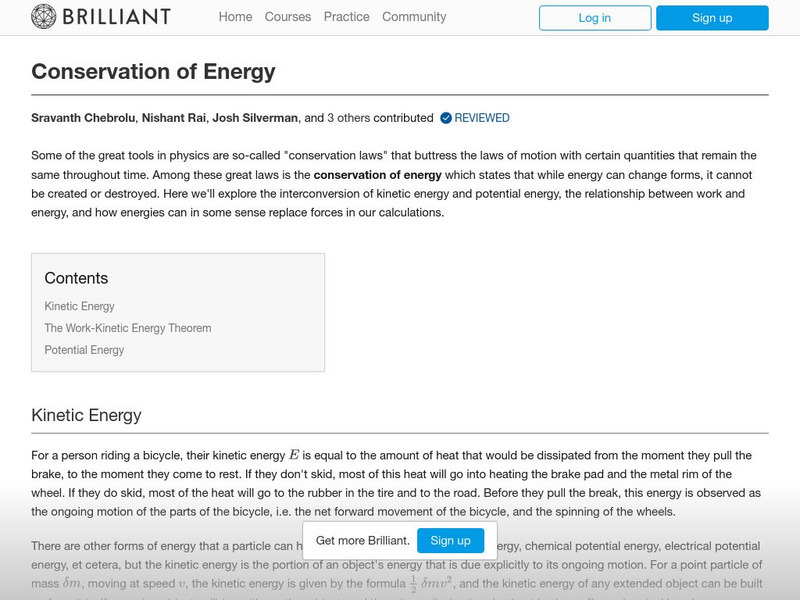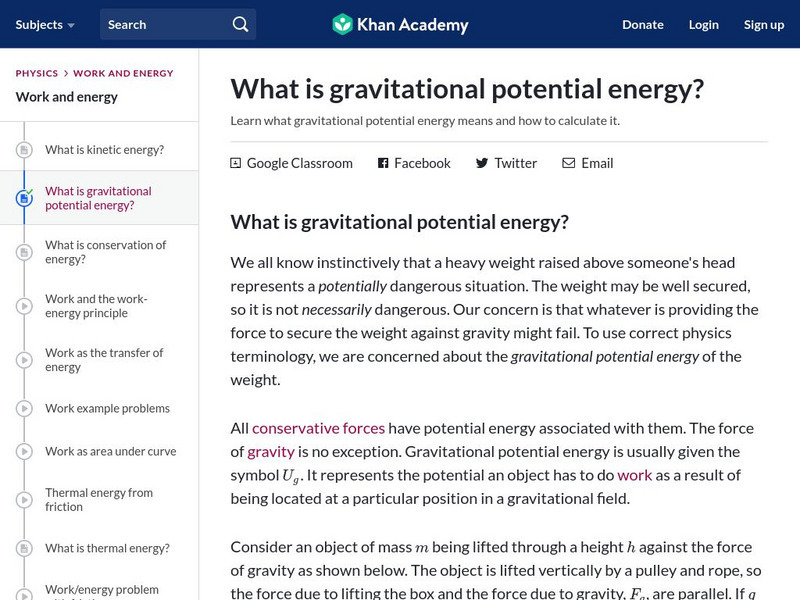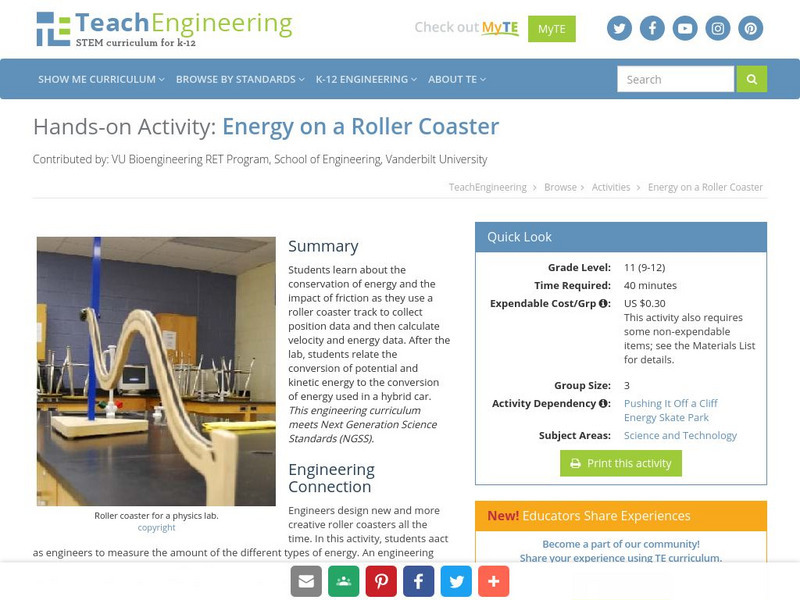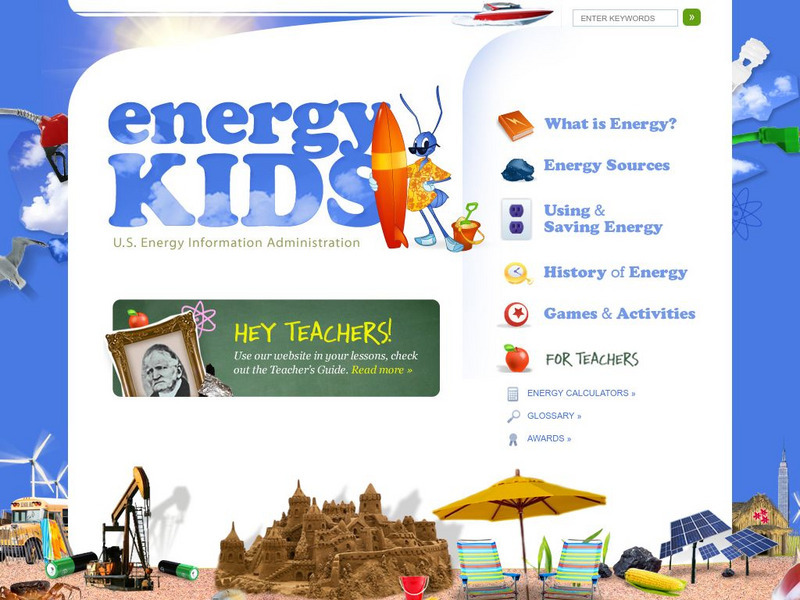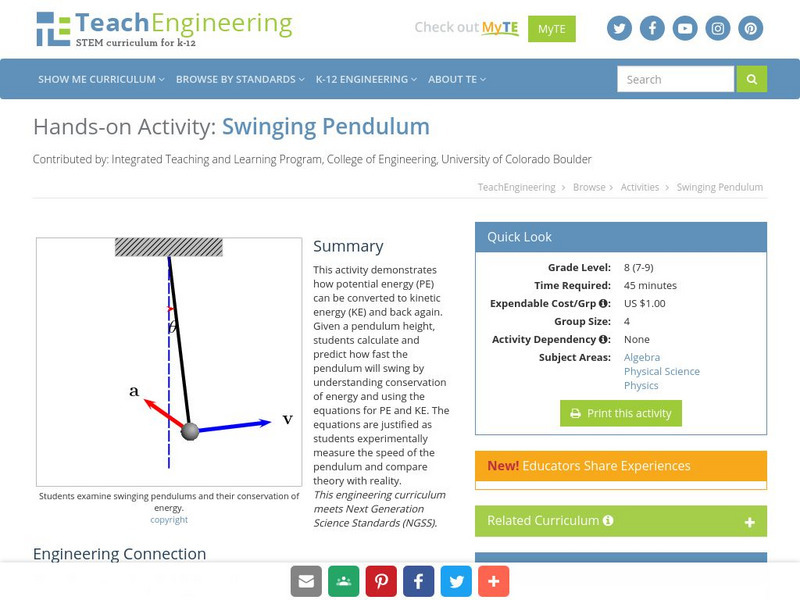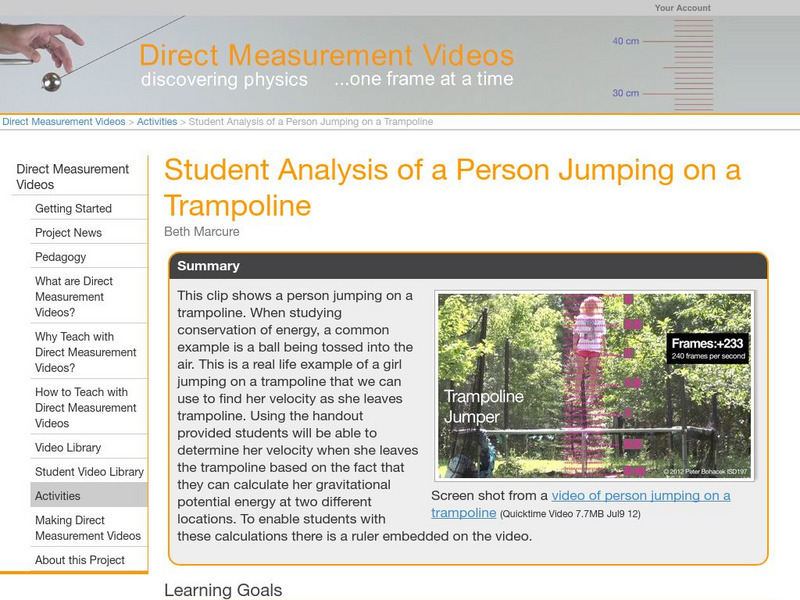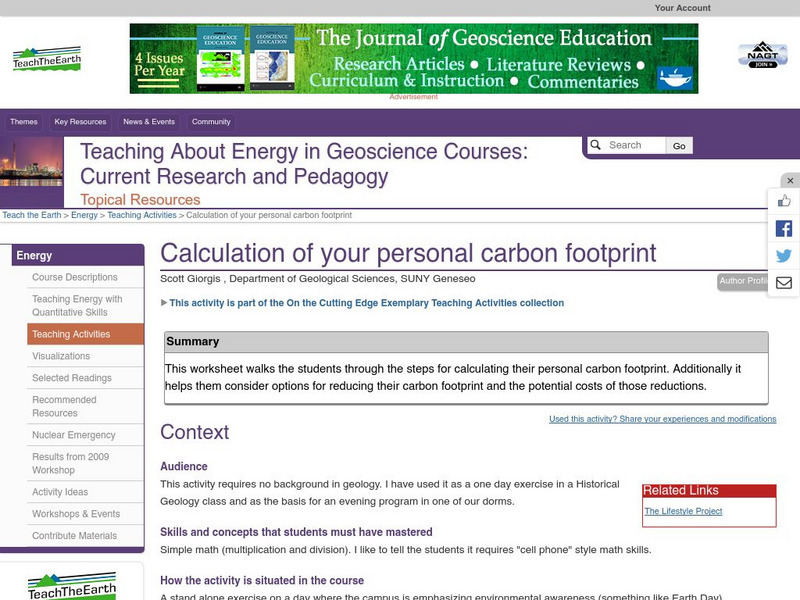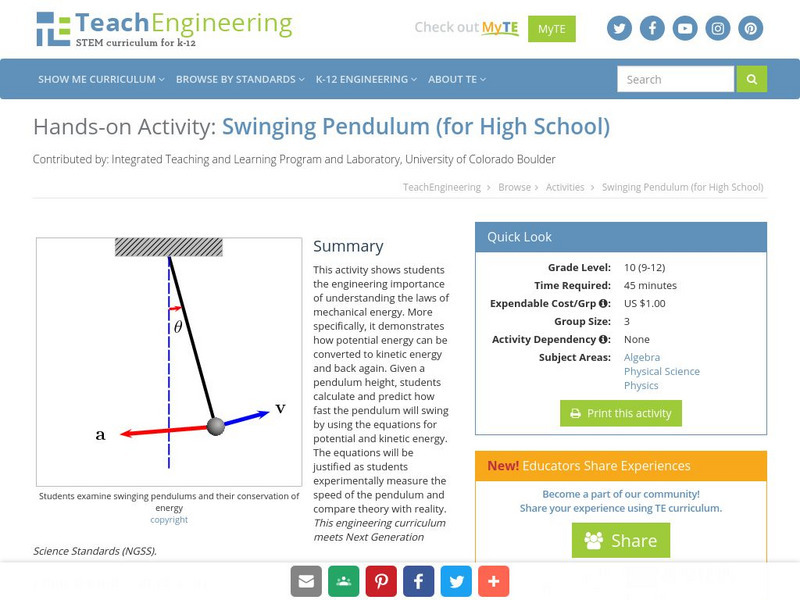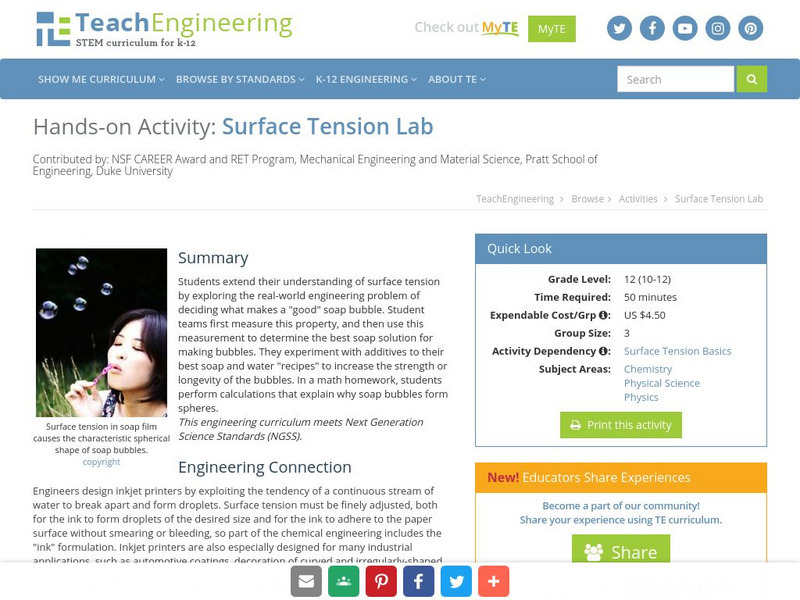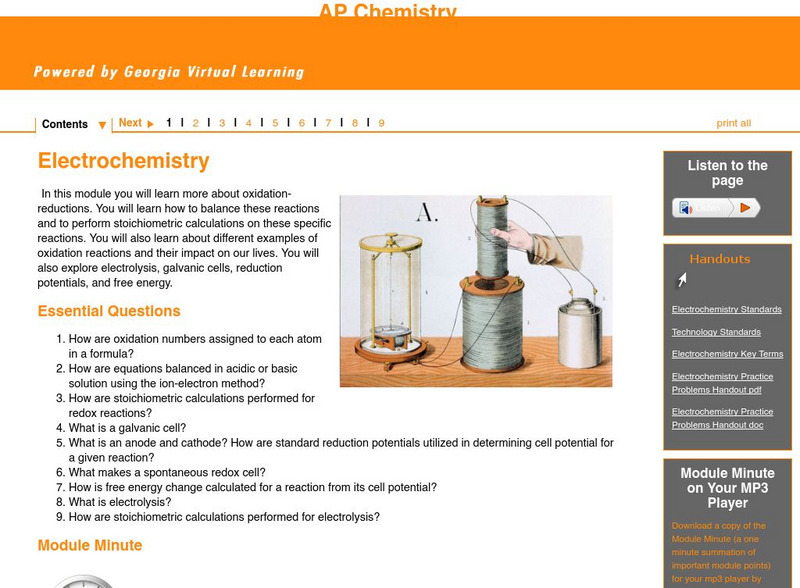Hi, what do you want to do?
Khan Academy
Khan Academy: What Is Elastic Potential Energy?
This site explains and gives examples of elastic potential energy and how to calculate it.
Other
Brilliant: Conservation of Energy
Discusses conservation of energy, and explains what kinetic energy is, some kinds of potential energy, and how work and energy are related using the work-kinetic energy theorem. Provides lots of examples along with calculations.
Khan Academy
Khan Academy: What Is Gravitational Potential Energy?
This site explains what gravitational potential energy means and how to calculate it.
Ducksters
Ducksters: Physics for Kids: Potential Energy
Kids learn about potential energy in the science of physics. The energy of position and state can be calculated using mass, gravity, and height. The standard unit is the joule. How it is different from kinetic energy.
TeachEngineering
Teach Engineering: Energy on a Roller Coaster
This activity utilizes hands-on learning with the conservation of energy and the interaction of friction. Students use a roller coaster track and collect position data. The students then calculate velocity, and energy data. After the...
US Energy Information Administration
U.s. Eia Energy Kids
This comprehensive lesson teaches all about energy, including the different forms, the periodic table, history of human energy use and production, and energy units. It contains an interactive energy calculator, games and activities, and...
Sophia Learning
Sophia: Practice W/ Gravitational Potential Energy
This lesson provides the learner with example problems on calculating gravitational potential energy.
TeachEngineering
Teach Engineering: Falling Water
Students drop water from different heights to demonstrate the conversion of water's potential energy to kinetic energy. They see how varying the height from which water is dropped affects the splash size. They follow good experiment...
Georgia Department of Education
Ga Virtual Learning: Physical Science: Work and Energy
Find out about simple machines, calculate the mechanical advantage and efficiency of machines, differentiate potential and kinetic energy, and learn ways to use energy more efficiently.
TeachEngineering
Teach Engineering: Renewable Energy Living Lab: The Bright Idea
Students use real-world data to evaluate the feasibility of solar energy and other renewable energy sources in different U.S. locations. Working in small groups, students act as engineers evaluating the suitability of installing solar...
TeachEngineering
Teach Engineering: Renewable Energy Living Lab: Power Your School
Students use real-world data to calculate the potential for solar and wind energy generation at their school location. After examining maps and analyzing data from the online Renewable Energy Living Lab, they write recommendations as to...
Ducksters
Ducksters: Physics for Kids: Kinetic Energy
Kids learn about kinetic energy in the science of physics. The energy of motion can be calculated using mass and velocity. The standard unit is the joule. How it is different from potential energy.
TeachEngineering
Teach Engineering: Swinging Pendulum
This activity demonstrates how potential energy (PE) can be converted to kinetic energy (KE) and back again. Given a pendulum height, students calculate and predict how fast the pendulum will swing by understanding conservation of energy...
TeachEngineering
Teach Engineering: Household Energy Conservation and Efficiency
Students complete three different activities to evaluate the energy consumption in a household and explore potential ways to reduce that consumption. The focus is on conservation and energy efficient electrical devices and appliances.The...
Science Education Resource Center at Carleton College
Serc: Student Analysis of a Person Jumping on a Trampoline
For this activity, students learn about conservation of mechanical energy as they measure the velocity of a girl jumping on a trampoline using a direct measurement video with an embedded frame counter and ruler.
TeachEngineering
Teach Engineering: Power Your House With Water
Students learn how engineers design devices that use water to generate electricity by building model water turbines and measuring the resulting current produced in a motor. Students work through the engineering design process to build...
Science Education Resource Center at Carleton College
Serc: Calculation of Your Personal Carbon Footprint
This worksheet walks the students through the steps for calculating their personal carbon footprint. Additionally it helps them consider options for reducing their carbon footprint and the potential costs of those reductions.
Science Struck
Science Struck: What Is Potential Difference and How to Calculate It
Explains the concept of electric potential difference and how it is calculated.
TeachEngineering
Teach Engineering: Swinging Pendulum
This activity shows students the engineering importance of understanding the laws of mechanical energy. More specifically, it demonstrates how potential energy can be converted to kinetic energy and back again. Given a pendulum height,...
Science Struck
Science Struck: What Is Ionization Potential
Explains what ionization potential is and how to calculate it.
TeachEngineering
Teach Engineering: Ramp and Review (For High School)
In this hands-on activity - rolling a ball down an incline and having it collide into a cup - the concepts of mechanical energy, work and power, momentum, and friction are all demonstrated. During the activity, students take measurements...
TeachEngineering
Teach Engineering: Work and Power: Waterwheel
Investigating a waterwheel illustrates to students the physical properties of energy. They learn that the concept of work, force acting over a distance, differs from power, which is defined as force acting over a distance over some...
TeachEngineering
Teach Engineering: Surface Tension Lab
Students extend their understanding of surface tension by exploring the real-world engineering problem of deciding what makes a "good" soap bubble. Student teams first measure this property, and then use this measurement to determine the...
Georgia Department of Education
Ga Virtual Learning: Ap Chemistry: Electrochemistry
In this module students learn more about oxidation-reductions and how to balance these reactions and perform stoichiometric calculations on these specific reactions. Students also explore electrolysis, galvanic cells, reduction...






